South Dakota State University’s Little International is an event steeped in tradition, and this year was a big milestone for the nation’s largest two-day, student-run agricultural exhibition.
Little I celebrated its centennial in 2023. Despite inclement weather altering the schedule, the show did go on March 31-April 1.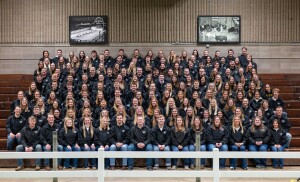
While the event can pass in the blink of an eye, organizers say it takes all year to plan and provides experiences and lifetime benefits that students would be hard-pressed to find anywhere else on campus.
Little I offers college students and younger 4-H and FFA members the opportunity to participate in agricultural career-development events including judging, showmanship and fitting contests. For many, it’s a family tradition and participants have been building those skills since childhood. Other participants have no agricultural background and are showing animals for the first time.
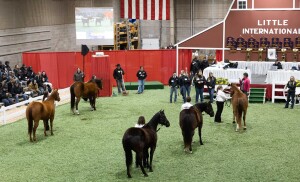 Little I started in 1921, but it didn’t happen for a couple of years due to Scarlet Fever and World War II. It was modeled after the Chicago International Livestock Exposition, now the North American International Livestock Exposition in Louisville, Kentucky, one of the largest livestock shows in the nation.
Little I started in 1921, but it didn’t happen for a couple of years due to Scarlet Fever and World War II. It was modeled after the Chicago International Livestock Exposition, now the North American International Livestock Exposition in Louisville, Kentucky, one of the largest livestock shows in the nation.
Leading the charge for the 164-student-volunteer team organizing the 100th Little I were manager Cody Gifford and assistant manager Isaac Berg. Gifford, from Tyler, Minnesota, just graduated with a degree in ag science with minors in animal science, ag business and ag marketing. Berg, who will move up to manager next year, is a junior from Pipestone, Minnesota, majoring in animal science with a minor in dairy industry.
At SDSU’s Little I, students are judged on how well they can show, groom and prepare university livestock, rather than showing off the quality of their own animals, which is what happens at other livestock shows.
“For us, it’s about the education for the exhibitor and showcasing what the exhibitor does, not the animal,” Gifford said. ”As far as Little I is concerned, we’re trying to grow their skills so that they can go out and do this with their own livestock in the future and be successful at it. The showmanship and the fitting piece all boost your ability to make an animal look better for an actual show.”
Between staff and exhibitors, the event involves 370 college students and 2,500 high school students who were registered to compete this year.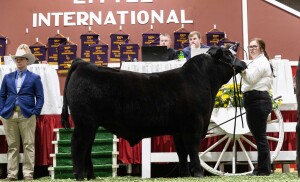
“As far as the university goes, it’s a huge recruitment tool to have that many high schoolers on campus,” Gifford said. “But to me, it really comes down to the educational aspect of it. Especially in our novice shows, we’re taking kids who have never shown that species or potentially never even been around that animal before and giving them all the tools and advice they need to be able to successfully show livestock.”
Berg said among the college students participating this year, roughly 10% weren’t part of SDSU’s College of Agriculture, Food and Environmental Sciences, and a good portion of those students probably didn’t grow up involved in the ag industry. Aside from curiosity, some are drawn by camaraderie and rivalry, because their friends are involved. And with so many people involved, new friendships are made, too.
Participants are gaining leadership, character and teamwork skills and networking with professional contacts for their future. Those include university faculty and staff who help out with the event and sponsors who open their wallets when student organizers are fundraising.
For the manager and a few others on the executive committee, planning for Little I is a year-round commitment. The rest of the staff are selected in early October and work through the show and staff banquet at the end of April.
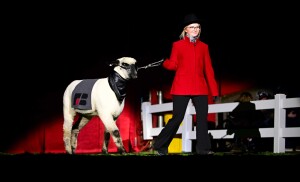 Gifford has participated in Little I at SDSU since seventh grade through FFA, and he admits his familiarity with campus played a big role in bringing him to SDSU as a college student. His older sister participated as well. He grew to love the organization and decided to go as far as he could with it, which eventually led to him becoming the 99th assistant manager and the 100th manager.
Gifford has participated in Little I at SDSU since seventh grade through FFA, and he admits his familiarity with campus played a big role in bringing him to SDSU as a college student. His older sister participated as well. He grew to love the organization and decided to go as far as he could with it, which eventually led to him becoming the 99th assistant manager and the 100th manager.
Berg’s involvement stretches back to his middle school years, too, and his parents and siblings are all Little I alumni. His grandfather was involved as well when he was on campus getting his master’s degree.
“It’s really been a family thing for me. Little I is something I’ve known most of my life, and coming in high school and middle school was a great way to build connections and to show off my skills. So I wanted to give back from those experiences,” Berg said.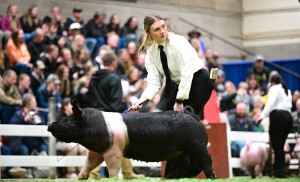
More than 100 years after its start, student interest shows no signs of waning. Gifford said they even have to turn away some would-be staff and participants because they run out of room.
“The interest is there. People want to do it,” he said.
Jill Fier







